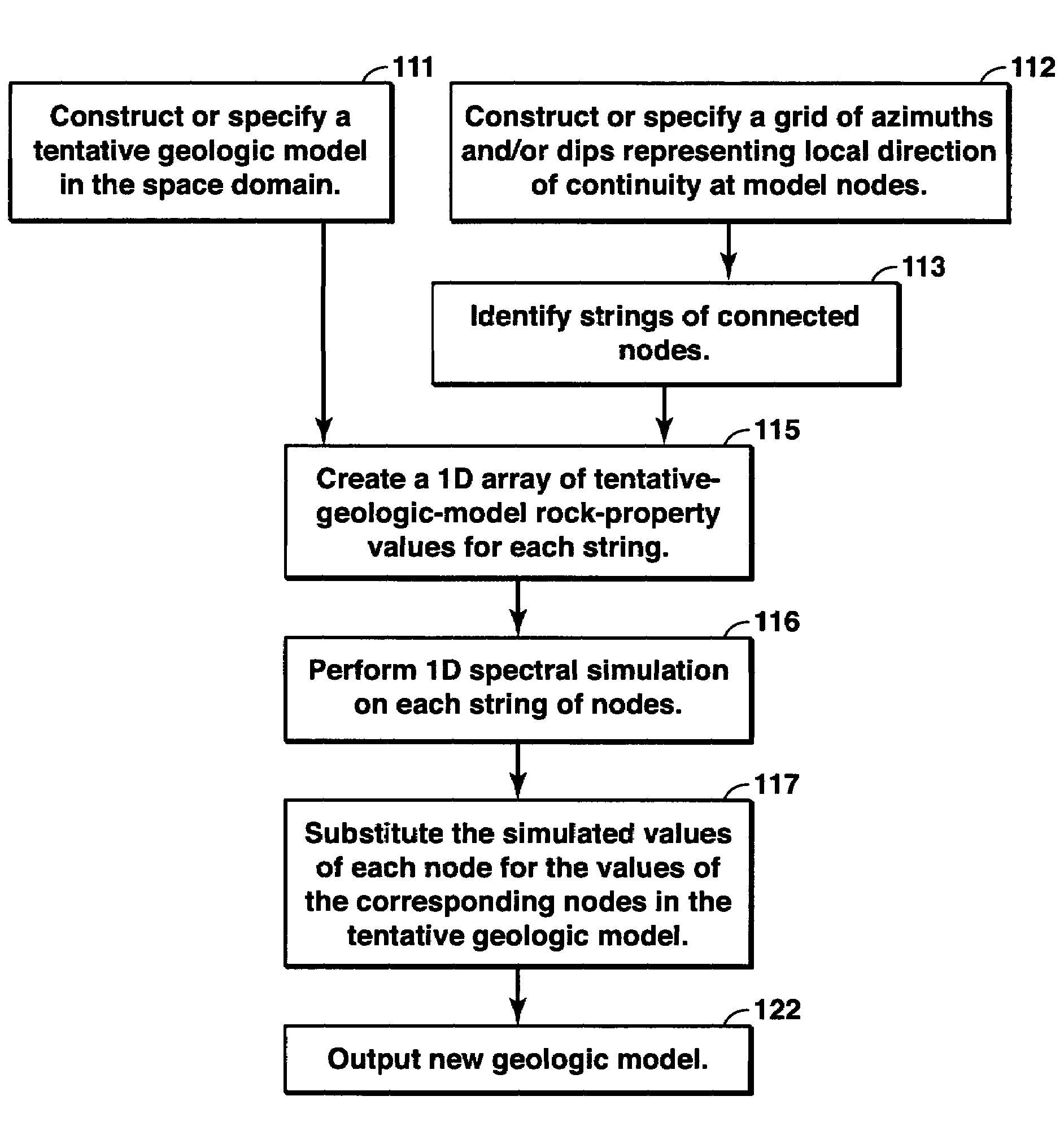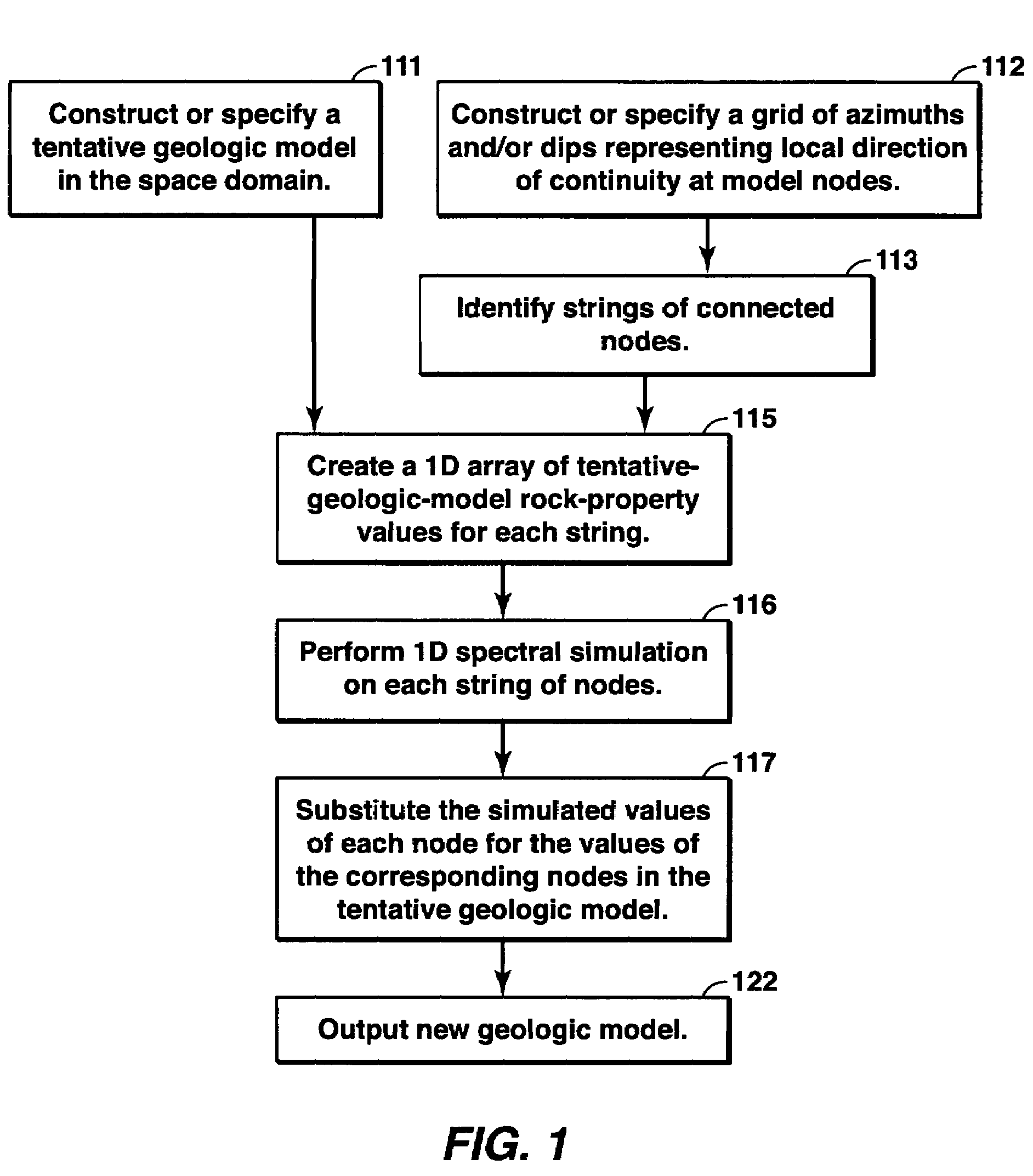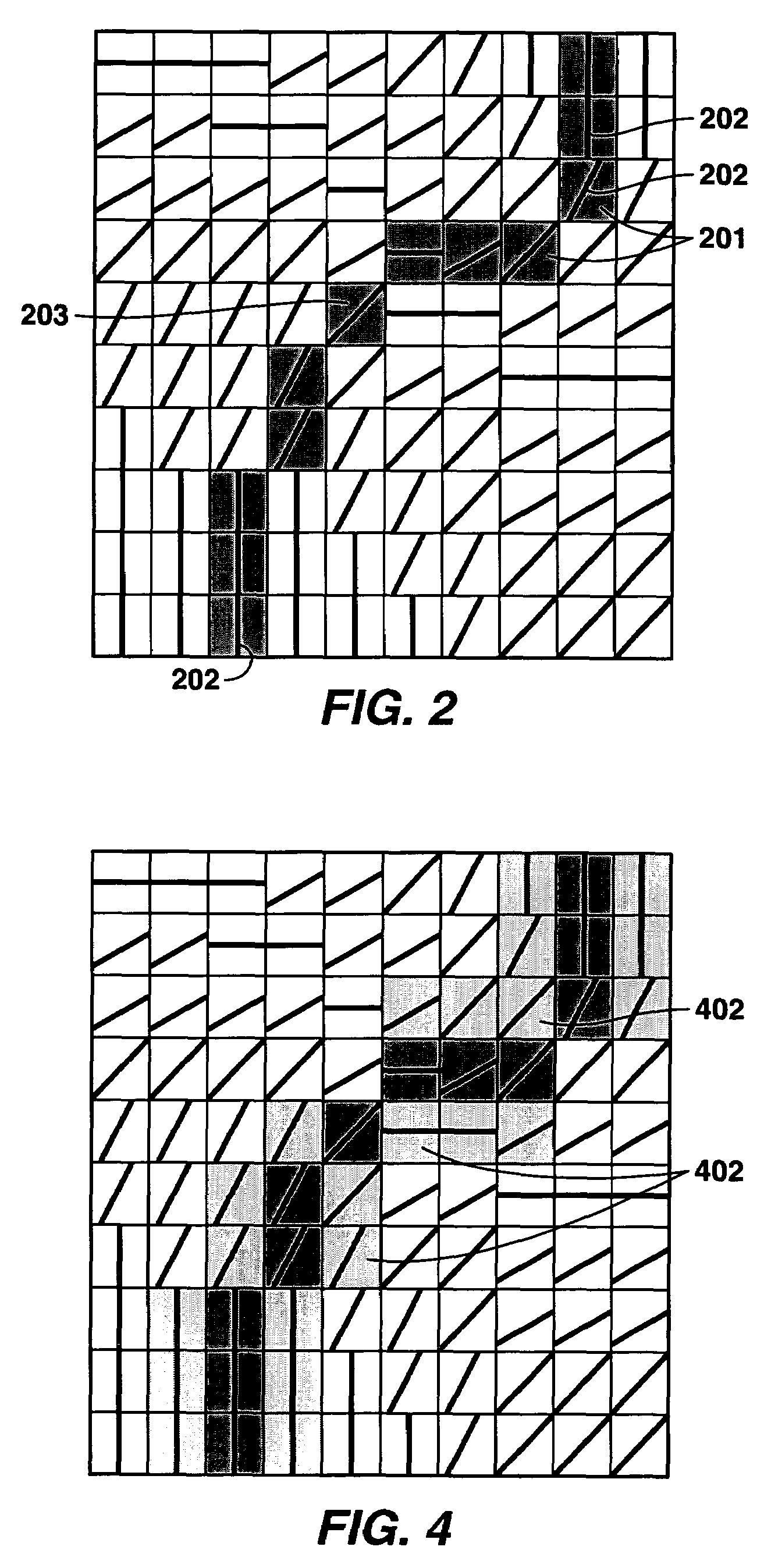Method of conditioning a random field to have directionally varying anisotropic continuity
a random field and anisotropic continuity technology, applied in the field of multidimensional random field conditioning, can solve the problems of limiting the assumption of stationarity in geologic characteristics of all geostatistical algorithms, including spectral simulation, and the inability of geostatistical methods to allow the direction of continuity to vary spatially
- Summary
- Abstract
- Description
- Claims
- Application Information
AI Technical Summary
Problems solved by technology
Method used
Image
Examples
first embodiment
[0031]the present method is directed to the simulation of continuity in a single dimension; locally, that dimension is represented by the orientation of maximum continuity. For example, for a given tentative geologic model, it may be assumed that the local continuity variations that are present in a tentative model for all directions other than that represented by a single local azimuth and / or dip of interest are desirable and do not need to be modified. In such a case the present method is applied to simulate the model's rock properties in the single dimension, whether azimuthal or dip-oriented. FIG. 1 shows the steps for implementing this embodiment, as further described below.
[0032]First, using any practical means, a tentative, multi-dimensional geologic model, FIG. 1, step 111 is created. The tentative model is generated by assigning at least one rock property value to each block within the model's grid. This process will be well known to practitioners of geologic modeling, and ...
second embodiment
[0041]In a second embodiment, it may be desired to simulate spatial continuity in two or three dimensions; one of these dimensions represented by the orientation of maximum continuity. FIG. 3 depicts the steps of this embodiment, and FIG. 4 depicts an example representative layer of a geologic model for which this embodiment may be appropriate.
[0042]The first three steps of this embodiment, FIG. 3, steps 311, 312, and 313, are identical to steps 111, 112, and 113 in FIG. 1. In this embodiment, once the strings of nodes have been identified, FIG. 3, step 313, nodes are identified that neighbor each node in the identified strings, FIG. 3, step 314. As depicted in FIG. 4, the strings of neighboring nodes that are identified in FIG. 3, step 314 are the lighter-shaded blocks 402. Neighboring nodes may be defined as adjacent nodes that are perpendicular to the string node, though other definitions could also be applied. Neighboring nodes may surround the string nodes on all sides, for exa...
third embodiment
[0046]the present invention is described in the following paragraphs in the context of controlling the directional variation in continuity within each two-dimensional stratigraphic layer in a multi-layer geologic model. However, as will be understood to those skilled in the art, this embodiment may be employed to control two-dimensional directional variations in continuity occurring along any arbitrary plane of the model, or three-dimensional directional variations in continuity occurring within the geologic-model volume. In addition, the description of this embodiment focuses on the computationally less burdensome “string” simulation method (FIG. 1 above), although extension of this description to apply to the alternative “strip” simulation method (FIG. 3 above) is straightforward. FIG. 5 depicts the detailed steps that comprise this embodiment.
[0047]In this embodiment of the present invention, the tentative geologic model is constructed in four steps, FIG. 5, steps 511 through 514...
PUM
 Login to View More
Login to View More Abstract
Description
Claims
Application Information
 Login to View More
Login to View More - R&D
- Intellectual Property
- Life Sciences
- Materials
- Tech Scout
- Unparalleled Data Quality
- Higher Quality Content
- 60% Fewer Hallucinations
Browse by: Latest US Patents, China's latest patents, Technical Efficacy Thesaurus, Application Domain, Technology Topic, Popular Technical Reports.
© 2025 PatSnap. All rights reserved.Legal|Privacy policy|Modern Slavery Act Transparency Statement|Sitemap|About US| Contact US: help@patsnap.com



